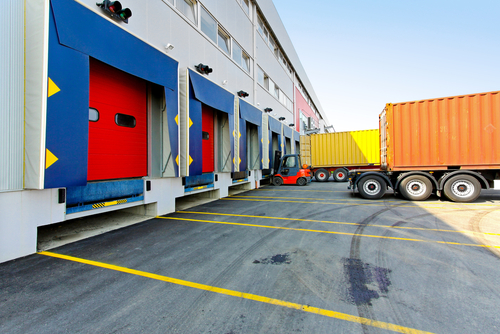 |
It’s the most wonderful time of the year … for retailers and all of the other companies that feed into the holiday retail frenzy. This means that while the cash registers are buzzing in the front, the loading docks are buzzing in the back as well as at countless suppliers.
Keep these areas—where workers, heavy equipment, and stacked and stored materials mingle seemingly nonstop—safe during the holiday season.
Loading Dock Safety: The Hazards (continued)
Prepare employees who work on and around loading docks to avoid the following hazards.
Forklift hazards. Forklift operators should be fully trained in the safe operation of their vehicles, but other workers in the area need to know to steer clear. If you’re on foot around forklifts, make sure you know where you can and cannot be to stay safe.
Trailer hazards. A shifting trailer can pin you against the loading dock or under the trailer itself; if the load inside the trailer shifts, you can be struck and pinned there. A shifting trailer can also loosen a dock plate, putting forklift operators at risk. Make sure trailer wheels are properly chocked against movement.
What is the most effective and cost-efficient way to provide safety training for your workforce? Try a demo of BLR’s remarkable TrainingToday® at no cost or obligation.
Dock board/dock plate hazards. Dock boards and dock plates must be able to support any load placed on them, and they must not move during use. Make sure dock boards or dock plates are secured to prevent serious fall hazards.
Manual material-handling hazards. Not all materials are handled by forklifts. If you will be manually loading or unloading materials, use safe lifting techniques and nonpowered tools like pallet jacks to protect yourself.
Low-light hazards. All loading dock hazards are more dangerous in poor light—it’s harder to see edges and to tell when loads are properly secured. Keep light fixtures clean and functional, and make sure you use good lighting inside the trailer, too.
Diesel exhaust emissions. Diesel exhaust can cause eye irritation, headaches, nausea, asthma, lung damage, and cancer. Reduce exposures by turning off truck engines during loading and unloading and limiting idling times as much as possible. If mechanical ventilation is available, use it.
Blocked walkways. Don’t let stored materials spill over into walkways. Narrowed aisles increase the risk of collisions between forklifts and stored materials, and between forklifts and pedestrians. Blocked aisles can make it impossible to get out in the event of a fire. Even when things get crowded, make sure aisles and passages are kept clear.
Blocked safety equipment. In a crowded warehouse, it can be tempting to stack and store materials in front of safety showers and eyewashes, fire extinguishers, alarm pulls, and electrical panels. Don’t do this. It can increase the risk of fire and make it impossible to get to help (for example, safety showers, eyewashes, and alarm pulls) when you need it. Keep safety equipment clear and accessible.
Try a demo of BLR’s remarkable award-winning TrainingToday® at no cost or obligation. This includes the Workplace Safety Library. Get the details.
Conclusion
The holidays should be a time for celebration. Stay safe on the loading docks so your holidays are not spoiled by a serious injury.
